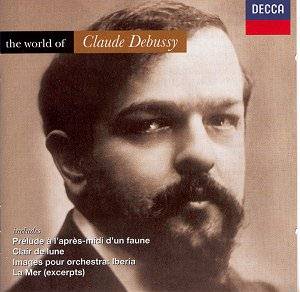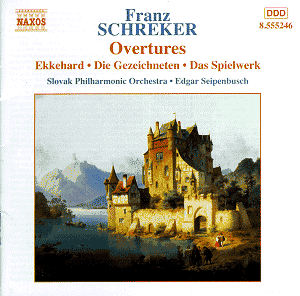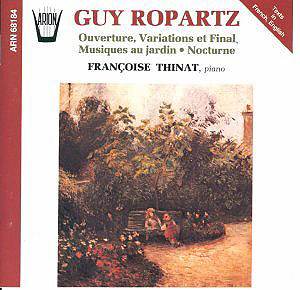 Composer: Nicolai
Composer: Nicolai
Works: Mikhail Glinka: Ruslan and Ludmilla: Overture; Alexander Borodin: Symphony No. 2 in B minor; Nikolai Rimsky-Korsakov: The Snow Maiden: Cortège, Dance of the Tumblers; Pyotr Ilyich Tchaikovsky: The Nutcracker: March, Dance of the Sugar Plum Fairy, Russian Dance, Chinese Dance, Dance of the Reed Pipes; Sergei Prokofiev: Symphony No. 7, Op. 131; Joseph Haydn: Symphony No. 92 in G, Hob. I/92 – “Oxford”; Franz von Suppé: Dichter und Bauer: Overture; Antonín Dvořák: Symphony No. 9 in E minor, Op. 95 – “From the New World”; Carl Nielsen: Maskarade: Overture
Performers: Danish State Radio Symphony Orchestra, Royal Danish Orchestra, Philharmonia Orchestra; Nicolai Malko, conductor
Recording: Danish Radio Concert Hall, Copenhagen; Kingsway Hall, London; Odd Fellow Palast, Copenhagen; various dates from 1947 to 1956
Label: EMI
The recent release featuring Nicolai Malko’s interpretations offers a compelling glimpse into the artistry of a conductor whose contributions have often been overshadowed by his contemporaries. Malko, whose career spanned tumultuous periods in both Russia and the West, brings a unique sensibility to the orchestral repertoire at hand. This compilation juxtaposes well-known masterpieces from the Russian and Central European canon, reflecting a blend of nationalistic fervor and classical elegance that was characteristic of Malko’s style.
Malko’s approach to Glinka’s “Ruslan and Ludmilla” Overture is particularly noteworthy. Unlike the more frenetic interpretations often favored today, Malko opts for a buoyant, steady pulse that allows the music’s inherent grace to flourish. This interpretative choice reveals the lyrical qualities of the piece, as the melodic line sings with a Mozartian clarity, demonstrating Malko’s penchant for lyrical beauty over sheer bravura. The subsequent “Dance of the Tumblers” by Rimsky-Korsakov showcases Malko’s meticulous attention to articulation and dynamics, where he balances vigor with clarity, thus enhancing the piece’s rhythmic vitality without descending into mere flamboyance.
Borodin’s Symphony No. 2, a staple of the repertoire, benefits from Malko’s steady hand. The first movement unfolds with a natural ebb and flow, allowing the contrasting themes to emerge without jarring transitions. Malko’s control of tempo in the second movement—where syncopations can easily be lost in overzealous interpretations—demonstrates a deep understanding of the symphonic structure. The slow movement stands out as a hallmark of Malko’s interpretative philosophy: the horn solo, tender and unforced, is set against a backdrop of gently layered strings, encapsulating an ethos of warmth and sincerity that permeates the performance.
The sound quality of this release is commendable, with the original recording’s clarity preserved effectively. EMI’s engineering captures the orchestra’s sonority while maintaining a balanced sound stage that does justice to the orchestral textures. However, one might note that some of the recordings, particularly those from the late 1940s, exhibit a slight constriction in dynamic range, which may not satisfy modern listeners accustomed to the more expansive sound of contemporary recordings.
Tchaikovsky’s excerpts from “The Nutcracker,” while performed with precision, can feel a touch serious, lacking the exuberance that one often associates with this beloved ballet suite. This interpretation aligns with Malko’s overall aesthetic—one that prioritizes formal clarity over the emotional extremes that Tchaikovsky so often evokes. In contrast, the performance of Dvořák’s “From the New World” Symphony is a triumph. Malko’s broad tempos in the slow movement allow for a deep emotional resonance, while the finale, brisk yet joyful, encapsulates the work’s thematic cohesiveness without overdriving the orchestral forces.
The inclusion of Haydn’s Symphony No. 92 offers a refreshing contrast. Malko’s brisk and lively interpretation, particularly in the finale, showcases his ability to merge vitality with classical elegance. Unlike some of his contemporaries, Malko avoids excessive romanticization, drawing attention instead to Haydn’s ingenious orchestration and structural ingenuity.
This compilation presents a mixed bag in terms of repertoire selection; while the performances of Borodin and Prokofiev are exemplary, other pieces, such as Suppé’s Overture, seem somewhat superfluous in the context of Malko’s artistic strengths. Yet, the vitality and insight Malko brings to each score serve as a reminder of his artistry and dedication to the composers he championed.
Malko emerges not merely as a fine conductor but as an artist whose interpretations reflect a disciplined yet sensitive understanding of the orchestral repertoire. His ability to maintain clarity and balance while allowing the music to breathe speaks to a legacy worthy of revisiting. This collection not only enriches our understanding of Malko’s contributions but also stands as a testament to a conductor who dedicated his craft to elucidating the beauty of the scores he directed.



